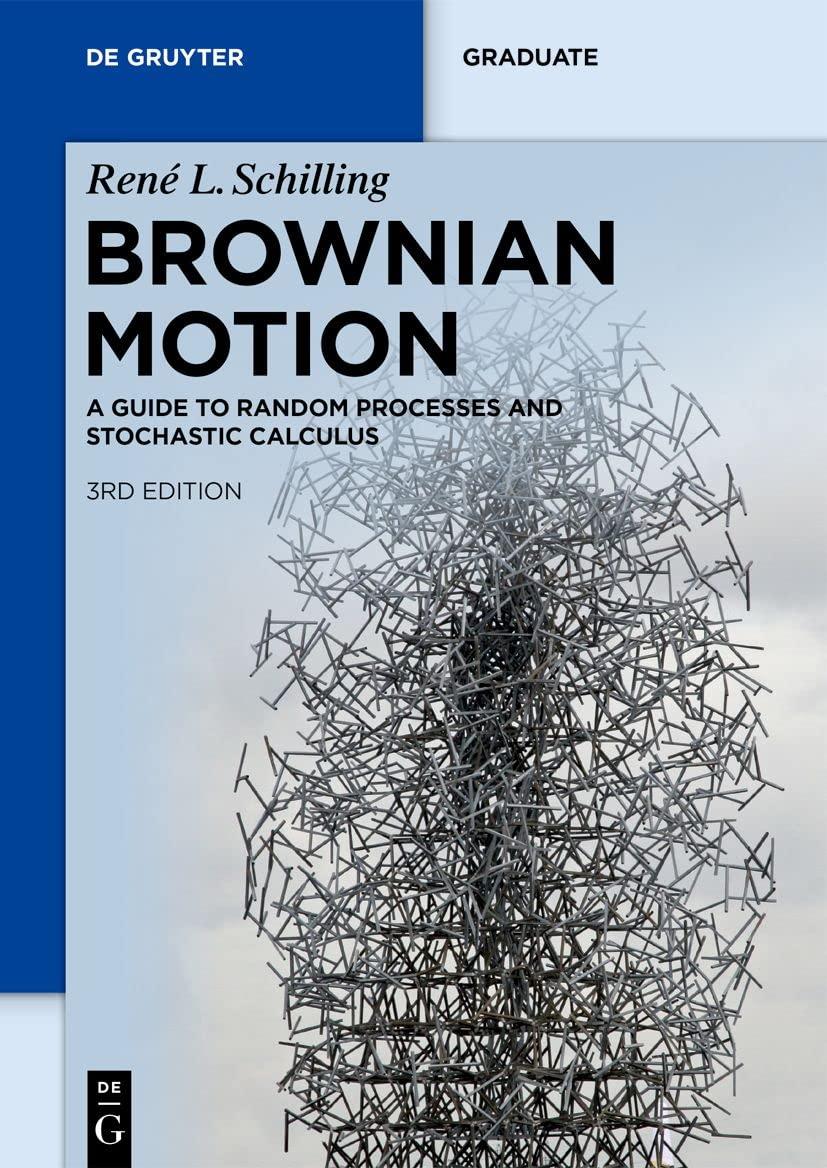Let (left(B_{t} ight)_{t geqslant 0}) be a (mathrm{BM}^{d}) and denote by (left(X_{t}^{x} ight)_{t geqslant 0}) the strong
Question:
Let \(\left(B_{t}\right)_{t \geqslant 0}\) be a \(\mathrm{BM}^{d}\) and denote by \(\left(X_{t}^{x}\right)_{t \geqslant 0}\) the strong solution of the SDE
\[d X_{t}=abla c\left(X_{t}\right) d t+d B_{t}, \quad X_{0}=x \in \mathbb{R}^{d},\]
where \(c \in \mathcal{C}_{c}^{2}\left(\mathbb{R}^{d}, \mathbb{R}\right)\). The following problem makes a connection between \(X\) and Brownian motion killed with rate \(V(\cdot)\).
a) Show that for \(\phi \in \mathcal{C}_{c}\left(\mathbb{R}^{d}, \mathbb{R}\right)\)
\[\mathbb{E} \phi\left(X_{t}^{\chi}\right)=\mathbb{E}\left[\exp \left(-\int_{0}^{t} V\left(B_{s}\right) d s\right) e^{c\left(B_{t}\right)-c(x)} \phi\left(B_{t}\right)\right]\]
with the potential \(V(x)=\frac{1}{2}|abla c(x)|^{2}+\frac{1}{2} \Delta c(x)\).
Use Girsanov's theorem to show the formula for \(\mathbb{E} \phi\left(X_{t}^{x}\right)\). The formula for \(V\) follows with an application of Itô's formula to \(Z_{t}:=c\left(B_{t}\right)\).
b) Use the Feynman-Kac formula to rewrite the formula for \(T_{t}^{X} \phi(x):=\mathbb{E} \phi\left(X_{t}^{x}\right)\) in the following way:
\[T_{t}^{X} \phi(x)=e^{-c(x)} T_{t}^{Y}\left(\phi(\cdot) e^{c(\cdot)}\right)(x)\]
for a suitable operator semigroup \(T_{t}^{Y}\). The corresponding process \(\left(Y_{t}\right)_{t \geqslant 0}\) is a Brownian motion killed at rate \(V\).
Remark. This is a particular case of Doob's \(h\)-transform with \(h(x)=e^{-c(x)}\).
Step by Step Answer:

Brownian Motion A Guide To Random Processes And Stochastic Calculus De Gruyter Textbook
ISBN: 9783110741254
3rd Edition
Authors: René L. Schilling, Björn Böttcher





